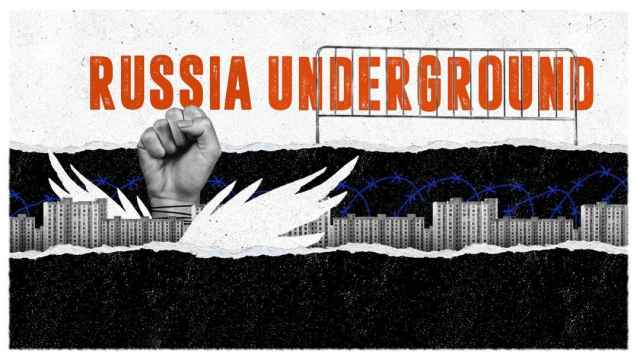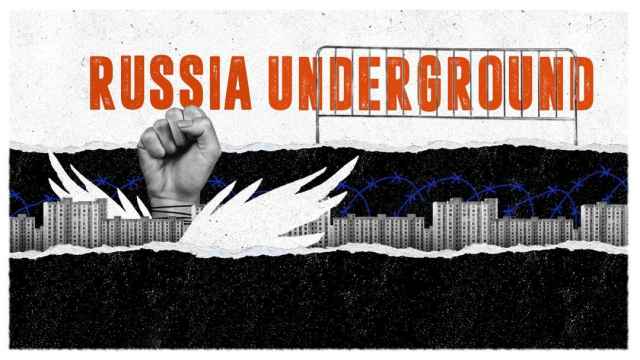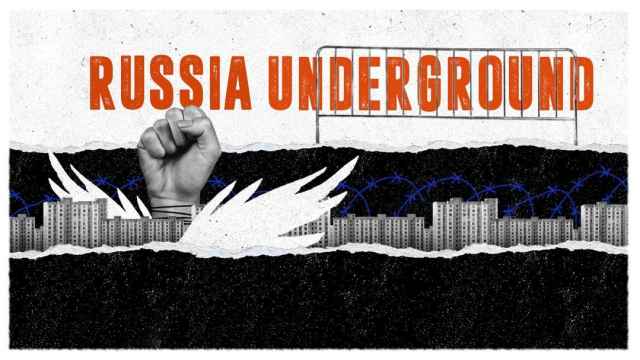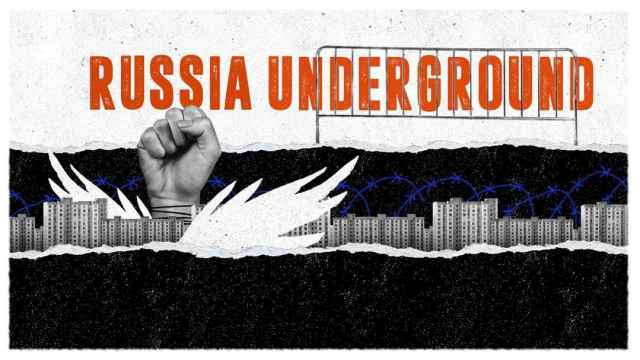День России: Russia Day
At The Moscow Times we follow the Russian work and holiday schedule, even though we are all living outside Russia. It might sound daft, but it actually makes sense. First of all, we’re covering news from Russia, so we need to work when Russia works and take a break when nothing is going on in business or government life. And second, since we’re in different countries, if we were each to follow the work-holiday schedule of our countries of residence, it would be scheduling chaos.
Which is why we are having a four-day work week after taking Monday off for… what holiday? Say again?
Even if you remember the name — День России (Russia Day) — it’s hard to remember what it is.
So I thought it might be useful to do a run-down of current Russian holidays and all their previous incarnations. It’s rather confusing. For the last 30 years, Russia has been playing a game of keep the holiday, change its name and meaning.
The year starts out with a rather confused series of holidays that depend on your religion, level of religious observance, and stamina for cooking holiday dinners twice. Новогодние праздники (New Year’s holidays) stretch from Jan. 1st through the 8th. Non-observant Orthodox Christians and Russian citizens of other or no religious affiliation can join the world in raising a glass to the new year at midnight on Jan 1 — after listening to the President’s address and eating their body weight in салат Оливье (Olivier Salad). In the old days — and for many today — this was more of a family holiday than a get-dressed-and-party holiday.
It is also the night when you give your babies and pets успокаивающие (sedatives) to keep them sane while the neighbors shoot off fireworks until morning.
Observant Orthodox Christians are meant to be fasting, which means no alcohol, so they often do not mark New Year’s Day on Jan. 1.
Then comes Рождество Христово (Christmas), celebrated on Jan. 7, which is Dec. 25 according to the old Julian calendar. It’s not clear why this is done in some Orthodox churches, since no one thinks Dec. 25 is the actual day Christ was born, and especially since it ignores the tradition of Christmas preceding New Years for about 1900 years. But there it is.
Since Orthodox Christians went to bed early on Dec. 31, they celebrate Старый новый год (Old New Year) on Jan. 14, which would be Jan. 1 if we were living in 1916. Serious party-goers do, too, because the only thing better than one New Year’s party is two.
The next holiday is on Feb. 23 and is officially called День защитника Отечества (Defender of the Homeland Day) and unofficially called День мужчин (Men’s Day). This is, apparently, Very Wrong because: это общий праздник для всех, кто имеет отношение к защите Отечества (it is a general holiday for everyone who has anything to do with defense of the Homeland). But, like so many other holidays, its name changed over the decades. It was founded in 1922 as День Красной армии (Red Army Day); then in 1946 became День Советской армии (Soviet Army Day); then changed again in 1949 to be День Советской армии и Военно-морского флота (Soviet Army and Navy Day) presumably due to lobbying from the navy. It got its current name in 1992.
The former День мужчин is followed by День Женщин (Women’s Day) which is more formally Международный женский день (International Women’s Day) or Восьмое марта (March Eighth). It might follow men’s day in the calendar, but it preceded the men historically. It was originally — pause for dramatic effect — an American holiday first marked on Feb. 28, 1909 by the Socialist Party of America in New York City to commemorate the strike of women textile workers who wanted better working conditions. Although it was marked in the U.S.S.R. almost from the start, it only became a non-working day in 1966. It involves candies, flowers bought at five times their usual cost and awkward, fawning speeches at work.
April is a holiday-deprived month — although День дурака (April Fool’s Day) was beginning to catch on — but then everyone takes a break on the майские праздники (May holidays): Первомай (May 1) and День победы (Victory Day, May 9). In a good year, by working on Saturdays and using a few comp days, you can take the first two weeks of the month off work in order to work even harder at the dacha, cleaning, plowing, planting, painting and doing all manner of things that pull your back out.
May 1 also went through several versions, from День Интернационала (Internationale Day) right after the 1917 Revolution to День международной солидарности трудящихся — Первое Мая (Day of International Solidarity with Workers – May First) starting in 1972. Since the fall of the U.S.S.R. it has been called the less rousing but more appropriate Праздник весны и труда (Holiday of Spring and Labor).
День Победы (Victory Day) has always been День Победы and always on May 9 (Nazi Germany’s capitulation was signed in Europe just after 11 p.m. on May 8, which was already May 9 to the east in the Soviet Union). But it was only in 2008 that it began to be an annual extravaganza of tanks, bombers, missiles and overflights with thousands of marching service men and women. Previously there had only been parades in “юбилейные годы” (jubilee years, usually every five years) and it was more of a quiet family gathering of remembrance.
And now we arrive at the mysterious June holiday, День России (Russia Day). It was on June 12, 1990 that the Российская Социалистическая Федеративная Советская Республика (Russian Socialist Federative Soviet Republic), i.e., Russia within the Soviet Union, voted for its state sovereignty at its Congress of People’s Deputies. This wasn’t a withdrawal from the Soviet Union, but it did declare that its laws would take precedence over Soviet laws, which was the beginning of the end. It has been a non-working day since 1992, and perhaps by 2092 citizens will know what the holiday commemorates.
Finally, we come to the last holidays of the year, what used to be called ноябрьские праздники (the November holidays) which were at least two days off from work, Nov. 7 and 8. This marked the 1917 Revolution and was called officially День Великой Октябрьской социалистической революции (Great October Socialist Revolution Day). It marked Oct. 25 when Bolsheviks took over government buildings in St. Petersburg, then called Petrograd.
Bizarrely, to my mind, even though the coup took place on what was then October 25 and has always been called the October Revolution, after the Bolshevik government switched calendars to join the rest of the world, the government decided to celebrate it on the new day it fell on, Nov. 7.
This means that for almost 75 years, the October Revolution was always celebrated in November. What could go wrong?
In the late Soviet years this holiday was a Big Deal and usually involved the best of the office заказы (orders). These were packages of hard-to-find food for the holiday table. Although workers paid for them, they were almost priceless because their contents could not be bought in stores. An order might have contained a bag of rice, mandarin oranges, Indian instant coffee and, in prestigious offices, a tin of caviar.
After the Great October Socialist Revolution was more or less disgraced and abandoned, the holiday continued to be celebrated. Awkward. But people were used to a holiday in November, so in 1995 they tried making it work by giving it a catchy new name: День проведения военного парада на Красной площади в Москве в ознаменование двадцать четвёртой годовщины Великой Октябрьской социалистической революции (1941 год) (The day in honor of a military parade held on Red Square in Moscow in commemoration of the twenty-fourth anniversary of the Great October Socialist Revolution in 1941).
That didn’t go down well with the masses — can’t imagine why — so the next year they tried calling it День согласия и примирения (Day of Accord and Reconciliation), although no one ever discussed publicly or privately who was reconciled to what and what everyone was in accord about.
That didn’t go down well with the new Russian President, so after what seems to have been a long search, in 2005 some archive divers finally came up with a replacement holiday. Starting that year, the country would celebrate a new holiday on Nov. 4 called День народного единства (Unity Day). It officially marks three events: the successful attack led by Kuzma Minin and Dmitry Pozharsky on Kitai-Gorod on Nov. 4, 1612, which sent the Polish-Lithuanian invaders packing; the day of veneration of the Kazan Mother of God Icon (which provided miraculous help during the battles); and the end of the Time of Troubles. The dates are doubtful, the name doesn’t match the events, but it was a victory of sorts. Russians got a November holiday, and all was well with the calendar.
So now you know.
A Message from The Moscow Times:
Dear readers,
We are facing unprecedented challenges. Russia's Prosecutor General's Office has designated The Moscow Times as an "undesirable" organization, criminalizing our work and putting our staff at risk of prosecution. This follows our earlier unjust labeling as a "foreign agent."
These actions are direct attempts to silence independent journalism in Russia. The authorities claim our work "discredits the decisions of the Russian leadership." We see things differently: we strive to provide accurate, unbiased reporting on Russia.
We, the journalists of The Moscow Times, refuse to be silenced. But to continue our work, we need your help.
Your support, no matter how small, makes a world of difference. If you can, please support us monthly starting from just $2. It's quick to set up, and every contribution makes a significant impact.
By supporting The Moscow Times, you're defending open, independent journalism in the face of repression. Thank you for standing with us.
Remind me later.






